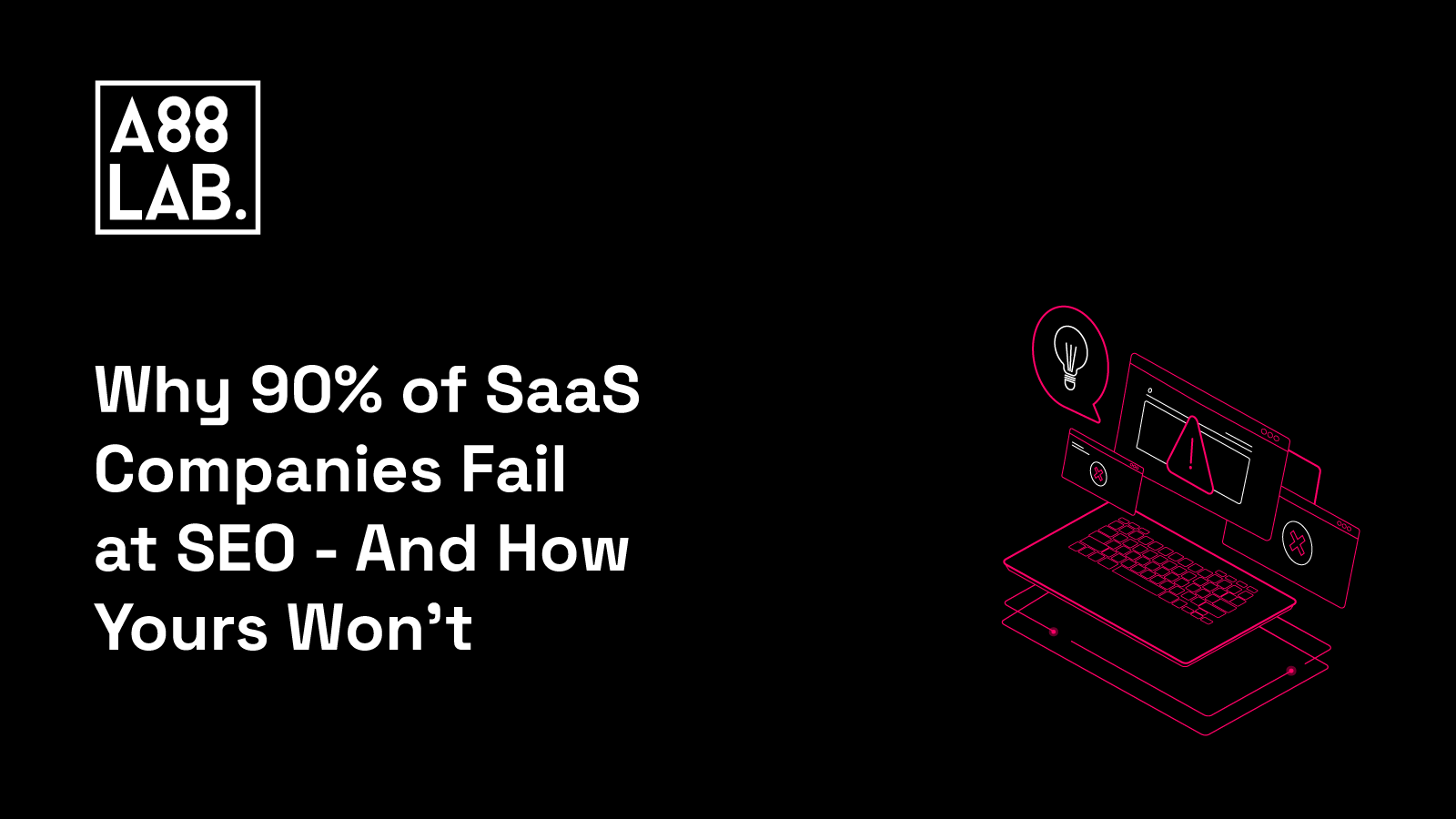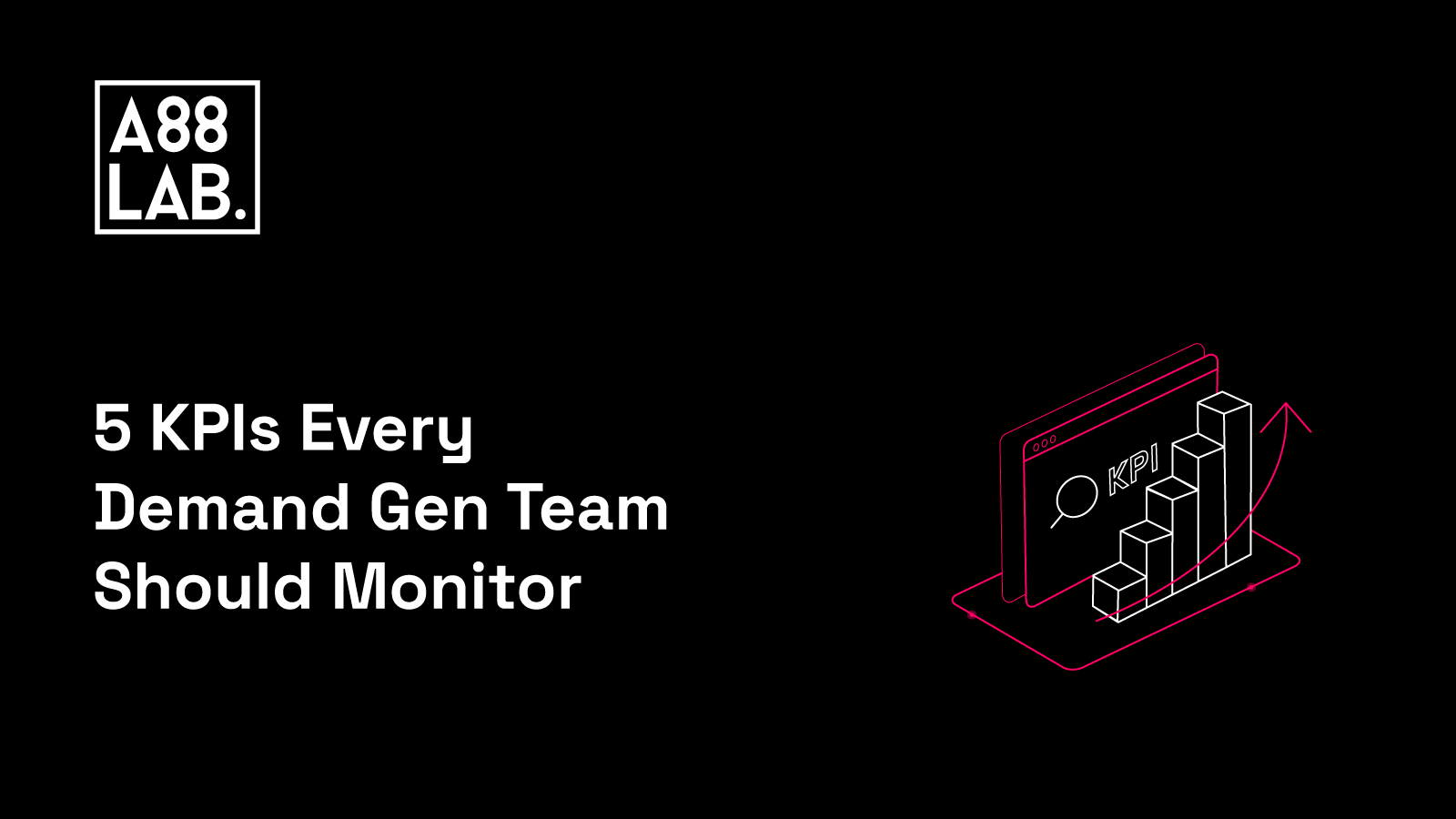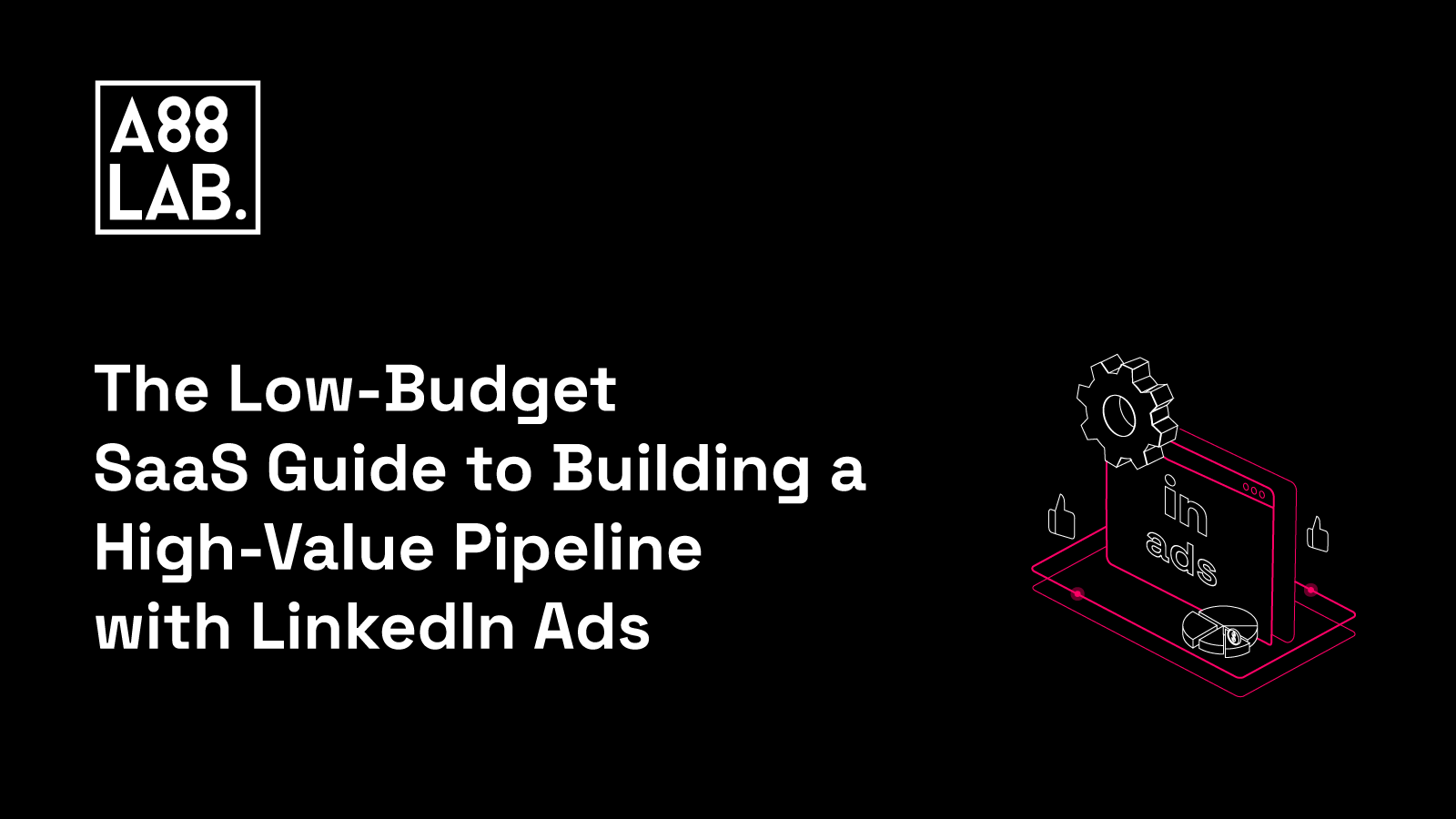Converting prospects into qualified leads contributes significantly to your overall demand-generation efforts.
When it comes to SaaS SEO, conventional strategies provide a solid foundation. However, a more tailored approach is required for optimal results. In this article, we'll dive into the most common SEO pitfalls that SaaS companies face and discuss, and we will discuss effective ways to fix them. Finally, we'll emphasize the importance of implementing successful SEO strategies for your company.
6 Reasons for SaaS SEO Failures
In the SaaS industry, there are so many moving parts, so often, the importance of developing a successful SEO strategy is overlooked. SaaS companies that lack SEO strategy might end up with significant revenue loss and missed opportunities from organic traffic.
Focusing on SEO best practices will help you generate more website traffic through good organic search ranking and reach more clients successfully; simply, this means more business and better growth results.
Let's take a look at some of the most common SEO mistakes SaaS companies make that hinder its effectiveness:
1. Not Building a Topical Authority
Building topical authority requires assisting search engines in understanding a website's topic and improving its chances of ranking high for relevant keywords.
SEO brings the first results usually on a mid-long term basis. This means building topical authority requires significant effort, time, and resources. Unfortunately, SaaS companies not being aware of the SEO process after not getting the expected short-term results get discouraged, stop their SEO efforts, and end up nowhere.
Remember the phrase "topics that are relevant to your product" as a general rule for topical authority. Start with choosing one topic and cover it in detail before moving on to the next. For instance, if your topic is "agile project management," create high-quality content that covers everything you know about it before moving on to the next one.
Building topical authority in SaaS SEO is essential for increasing your website's visibility, attracting organic traffic, and establishing trust and credibility within your industry. Neglecting this aspect of SEO can lead to missed opportunities and decreased competitiveness in the market.
2. Not Developing Content for All Keyword Intents
Keyword intent hides the customer's purpose for their search. It represents what the customers are most likely to do while searching for a particular information. Failing to provide keyword intent is failing to create content that meets customer needs and matches their intentions.
There are four types of keyword intent to keep in mind when creating your SEO content:
Informational Keyword Intent
Informational keyword intent usually represents a prospect interested in learning more about something. Oftentimes, you can find informational keywords in the form of question keywords, so they can begin with: "what," "why," "how," and so on.
When creating content for informational keyword intent, it's probably not a good idea to try and sell things right away. Informational keywords are a great tool for developing high-quality content that provides relevant and valuable information.
Use it to provide detailed blog posts, how-to or video tutorials, infographics, or even a step-by-step guide. Their main goal is educating the customers on the type of product or services your SaaS is offering and creating awareness around your brand.
Navigational Keyword Intent
Keywords customers use to find a specific page or website are known as navigational keyword intent. In this case, users most likely know what they are looking for. Navigational intent is usually low intent. Low intent means that while customers know what they are looking for, they are still not ready to make a purchase.
When creating content for navigational keywords, consider creating the following:
-
Tutorials: These can be in the form of videos or written guides that help users navigate through the product or service.
-
Knowledge-based content: Offer collections of articles that provide users with answers to frequently asked questions.
-
User guides: Provide step-by-step instructions on how to use the product or service the right way.
-
FAQs: Frequently asked questions pages are incredibly helpful for users who have specific questions about the product or service.
The goal is to make it as easy as possible for users to find the information they're looking for when they search for your brand. Providing a seamless and informative experience will not only satisfy existing customers but also attract new ones.
Commercial Keyword Intent
Commercial intent, also known as high intent or "buy now" intent, represents a strong intention to act. When customers use commercial keywords, they oftentimes look for specific brands, products, or services, and they may want to check reviews, compare products, or look for discounts before making their final decision.
The best type of content you can create to target this type of keyword is comparison articles, listicles, reviews, or how-to articles. As commercial intent basically reveals a customer's intent, they can help you target the high-quality prospects you are looking for.
Transactional Keyword Intent
Transactional intent represents customers ready to take that first step and purchase or subscribe to your product or service.
As customers use transactional keywords to get ready to buy something, they naturally have the highest intent out of all four types of keywords. This means transactional keywords also have the highest impact on your conversion rate.
A type of content you need to create to cover transactional keywords:
-
Subscription or signup pages
-
Product/service pages
-
Free trial pages
Conversions aren't always sales. Conversions can also mean subscribing to your newsletter, booking a discovery call, or filling out a questionnaire.
3. Not Providing Complete Customer Research
Creating high-quality content that ranks on search engines and boosts conversions is impossible without conducting comprehensive research to truly understand your target audience. Customer research is the one thing that will help you to get your content rank among the first search engine results.
Complete customer research includes:
Keyword Research
Keyword research will help you understand what your target audience is searching for. People use keywords to find solutions to their problems. Conducting this type of research will help you provide problem-solving content to your target audience. This will help you get your content among the first search engine results, which means it will get your content in front of the audience you are looking for.
Market Research
Conducting market research can help you get into your customer's minds and figure out what are the most important features they are looking for in a SaaS product, what they think of your product or service compared to your competition, and what are the things that motivate them. All this information will help you build around keywords and topics aligned with the search intent.
Some general recommendations to keep in mind when providing market research for your SEO strategy:
-
Define your target audience: Create a buyer persona and identify who is your target audience that you are trying to reach with your content.
-
Analyze your competitors: Look at what keywords and phrases your competitors are ranking for, and try to identify any gaps in their content that you could fill out.
-
Monitor and adjust your strategy: Use analytics tools to track the performance of your website and see how your audience interacts with your content. Use this information to fine-tune your strategy and continually improve your SEO efforts.
-
Ask for feedback: By regularly soliciting feedback from your visitors and customers, you can stay attuned to your target audience's needs and adjust your SEO strategy as needed.
By taking your time and providing comprehensive customer research that will help you understand your customer's pain points, you create content that not only ranks well but also converts. This will help you build a loyal customer base, increase brand awareness, and ultimately drive revenue.
4. Picking Extremely Competitive Keywords
Going after highly competitive keywords as an SEO practice can end up being a costly mistake. While there will always be competitive keywords to optimize for, ranking for them is very challenging.
Instead of solely focusing on the most competitive keywords, consider a more strategic approach. Long-tail keywords specific to your SaaS might have lower search volumes but can bring in more targeted and qualified traffic. It's like having a conversation with people genuinely interested in what you have to say.
Moreover, concentrating on niche keywords can help you establish your authority in a particular domain. You become the go-to expert in that specialized area, and over time, you might find it easier to compete for broader, more competitive keywords.
For instance, if you're a SaaS company that offers project management software, targeting the keyword "project management software" can be extremely challenging due to the high competition.
Instead, target long-tail keywords that are more specific to your product, such as "project management software for remote teams." These keywords may have a lower search volume, but they are often more relevant to your target audience and can lead to higher-quality traffic and conversions.
5. Not Focusing on Information Gain Score
Information Gain Score measures how unique your content is next to your competitors. In other words, it measures how much new information your content can provide compared to other articles. Why is it so important for SaaS SEO? Simply because Google uses this metric to actively promote or demote content based on the level of difference or sameness.
Failing to focus on information gain scores can lead to your content getting lost in a sea of similar articles, hindering your chances of ranking higher on search engine results pages.
By providing unique and valuable information, you increase the chances of your content being chosen by search engines to appear at the top of search results. So, make sure you are putting in the effort to create content that stands out and offers something new.
To write a content for information gain score:
-
Start by researching existing content and find ways to provide unique value. Don't just repeat what's already out there; aim to differentiate by leveraging your expertise and perspective.
-
When tackling popular topics, think creatively. Offer a different perspective or challenge common beliefs. Emphasize nuances and complexities that are often overlooked.
-
Use your own research to enhance your content. You can repurpose existing case studies, quiz your network, or conduct surveys to generate original insights. Share your company's success stories or how your products or services have benefited others.
-
Collaborate with subject matter experts within your organization. Incorporate their viewpoints or quotes to add depth and credibility to your content. Establish a systematic approach for gathering and integrating their insights into your content creation process.
6. Underestimating Internal Backlinking
While there is always a focus on building external backlinks, it's surprising how many SEO specialists underestimate the power of internal backlinking. Internal links help you improve your website's ranking by enhancing crawlability, spreading link equity, and boosting page authority, which is the ultimate SEO goal.
Internal links help users navigate through your website and spend more time exploring it. Without them, search engine crawlers may have trouble finding and indexing all the pages on your website, which can negatively impact your website's visibility in search results.
In addition, not having internal links makes it challenging for your visitors to find what they're looking for, leading to frustration and high bounce rates. High bounce rates hurt your website's user experience and lower your search engine rankings. Therefore, it's crucial to ensure your website has a clear and easy-to-use navigation system with internal links to relevant pages and content.
When including internal links into your content, link to pages on your website relevant to the content of the page you're searching the links for. This way, you're not only helping users get more information on a certain topic, but you also help them make informed decisions.
Here are a few tactics you can implement to fix the mistake of ignoring the internal links:
-
Connect relevant pages using keywords or phrases. You can improve the user experience and help customers find what they're looking for.
-
Use descriptive anchor text that relates to your SaaS product or service rather than generic phrases like "click here" or "read more."
-
Avoid over-optimizing your internal links by using exact match anchor text, and instead, use variations of your target keywords or long-tail phrases.
-
Monitor your internal links using tools like Google Analytics to ensure they're driving traffic and engagement.
Impact of Successful SEO Strategy on Your SaaS
SEO is not just about increasing website traffic. For SaaS companies, it can impact many aspects of business growth and success. By adopting SEO best practices tailored to the SaaS landscape, companies can experience a range of benefits that go beyond mere visibility.
To avoid the potential SEO failures SaaS SEO failures we would highly recommend the following SEO strategies:
-
Create comprehensive, well-researched, and informative content that addresses the pain points and needs of your target audience.
-
Invest in on-page optimization, including keyword research, to ensure your content aligns with relevant search queries.
-
Develop a content marketing strategy that focuses on thought leadership and expertise within your niche.
-
Build high-quality content that is going to be recognized from highly relevant websites with high domain authority. If those websites recognize this value they will publish the content and provide a direct link to the SaaS pages.
-
Monitor industry trends and continuously update and improve your content to remain relevant.
A well-executed SEO strategy ensures that your SaaS solution is easily discoverable to your target audience. This increased visibility translates into higher organic traffic, providing a steady stream of potential leads. More importantly, these leads are not just random visitors but individuals actively searching for solutions related to your SaaS offering.
Successful SEO involves attracting the right people at the right time. By aligning your SEO efforts with the customer journey, from awareness to decision-making, you ensure your content resonates with your audience at each stage. This targeted approach results in more qualified leads, increasing the likelihood of conversion and customer acquisition.
Moreover, a robust SEO strategy helps establish your SaaS company as an authoritative voice within your niche. Building topical authority through in-depth, well-researched content positions your brand as a trusted source of information. This not only attracts organic traffic but also instills confidence in potential customers, making them more likely to choose your solution over competitors.
Conclusion
In conclusion, navigating SaaS SEO requires a holistic approach that considers both technical and content-related factors. It's not just about achieving high rankings, but also attracting the right audience and building credibility within your niche.
Building topical authority, addressing the entire customer journey, conducting thorough customer research, and avoiding the allure of overly competitive keywords are all important pieces of the SEO puzzle. And remember, the impact of successful SEO on a SaaS business goes far beyond just website traffic – it can drive real, tangible results for your company's growth and success.
So, we encourage you to take this knowledge and put it into action. Review your current SEO practices, identify areas for improvement, and tailor your strategy to meet the unique needs of your SaaS business.
.png)


